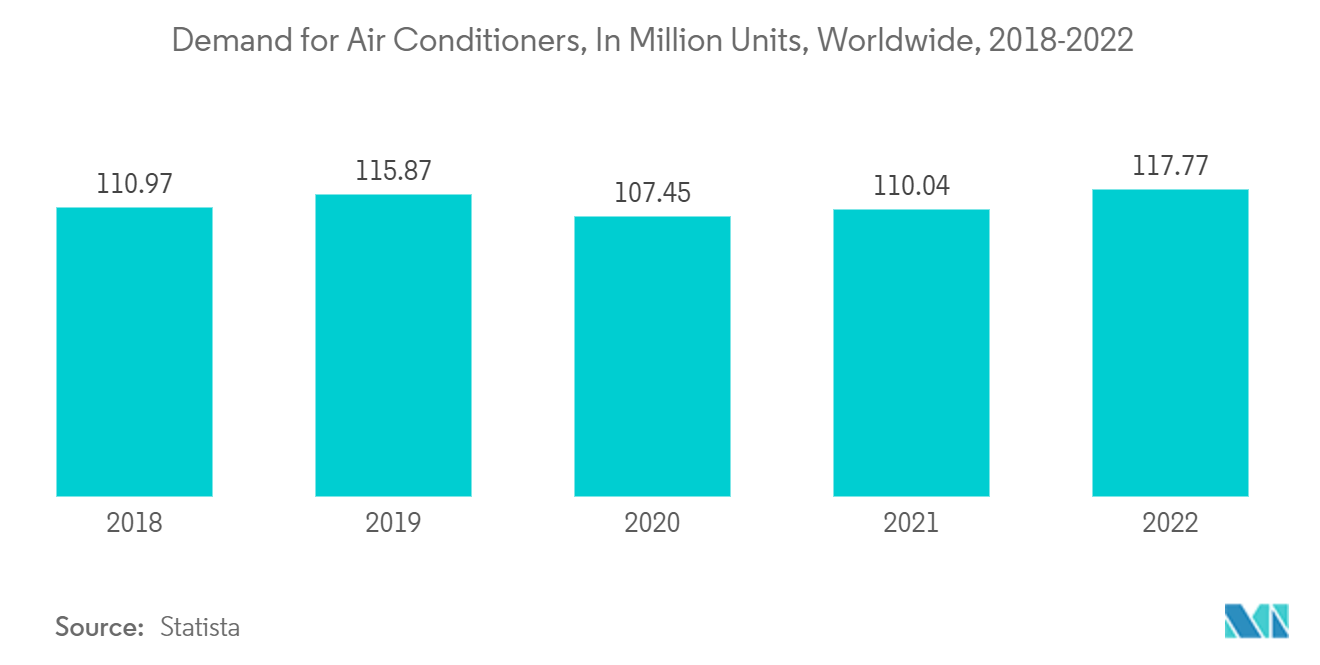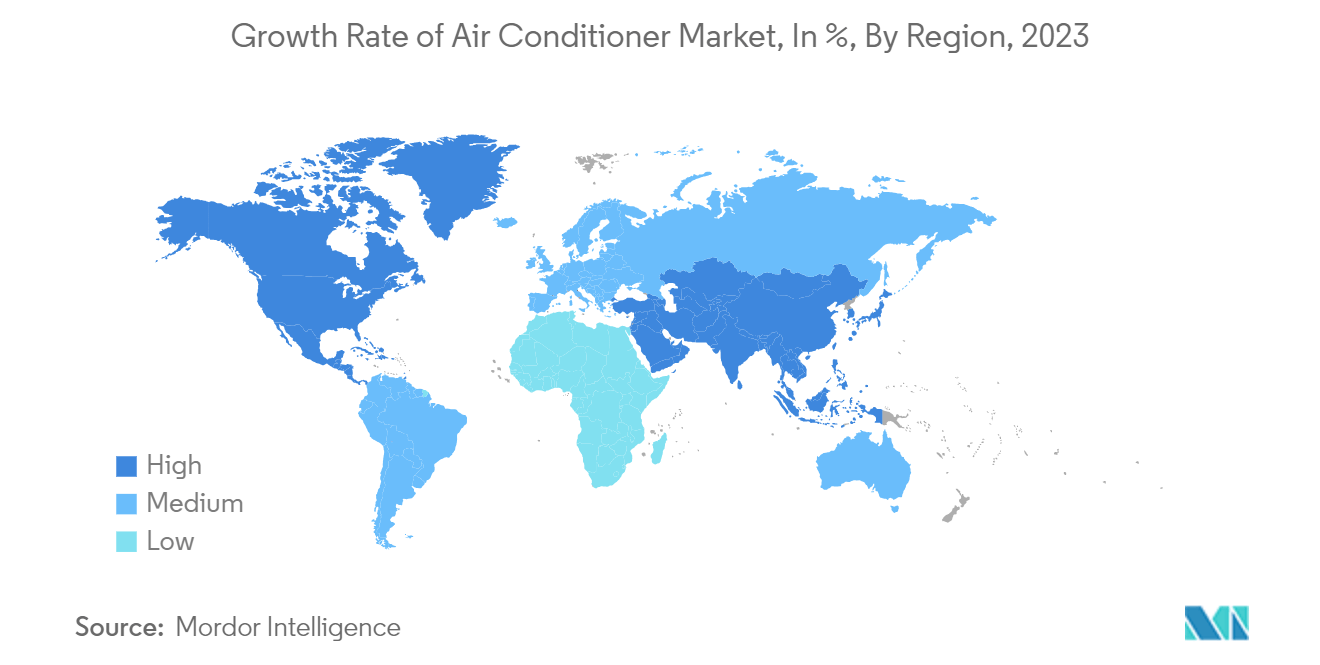Market Trends of Global Air Conditioner Industry
Growing Demand for Air Conditioners Globally
The growing demand for air conditioners worldwide is propelled by a convergence of factors. Increasing global temperatures, attributed to climate change and urban heat island effects, are driving the need for air conditioning to maintain comfortable indoor environments, especially during hot summer months. Rapid urbanization, particularly in emerging economies, is leading to higher population densities in urban areas where heat retention is common, further increasing the demand for air conditioning in residential, commercial, and institutional buildings. The demand for air conditioning systems in both residential and commercial settings is being driven by the increased knowledge of the comfort and health benefits of air conditioning, including enhanced indoor air quality, humidity management, and relief from heat-related health conditions.
The increasing demand for air conditioning in office buildings, retail spaces, healthcare facilities, data centers, and manufacturing plants is driving market growth as businesses prioritize employee comfort, productivity, and equipment cooling. Government initiatives that aim to improve energy efficiency and reduce greenhouse gas emissions are encouraging the adoption of energy-efficient air conditioning systems through regulations, incentives, and energy efficiency standards, thereby driving market demand.

Asia-Pacific Dominating the Air Conditioner Market
Factors such as rapid urbanization, rise in temperatures, increase in disposable income, and increased demand for comfort solutions are driving the Asia-Pacific region to be one of the major markets worldwide. The region comprises some of the most densely populated countries, including China, India, Indonesia, and Japan. Increased population growth and urbanization in these countries have led to an increase in demand for air conditioning systems in the residential, business, and educational sectors. Rising temperatures, exacerbated by climate change, are driving the region's need for air conditioning solutions. Southeast and South Asian countries experience scorching and humid climates, leading to higher demand for air conditioning systems to provide comfortable cooling.
The growth of the market is driven by technological advances in air conditioning systems, such as inverter technology, intelligent and connected features, and energy-efficient designs. These advancements improve energy efficiency, reduce operating costs, and enhance user experience, leading to higher adoption rates. For example, companies like Daikin, Mitsubishi Electric, and Panasonic offer advanced air conditioning systems with inverter technology and smart features that appeal to consumers in the Asia-Pacific region. In order to encourage the adoption of energy-efficient models, a number of countries in the Asia-Pacific region have introduced Energy Efficiency Standards and Air Conditioning System Labelling Programmes. For example, the Indian government has introduced the Energy Conservation Building Code (ECBC) and the Bureau of Energy Efficiency (BEE) star rating program to promote energy-efficient air conditioning systems.

